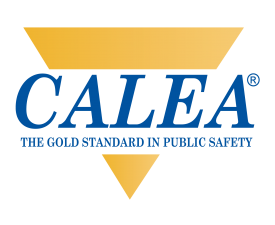Motorized Scooters
"Motor assisted scooter" pertains to a vehicle that:
- Is designed to be operated on the ground with not more than three wheels;
- Has handlebars and a foot support or seat for the operator's use;
- Can be propelled by motor or human propulsion; and
- Is equipped with a power source that is incapable of propelling the vehicle at a speed of greater than 24 miles per hour on level ground and:
- If the power source is a combustion engine, has a piston or rotor displacement of 35 cubic centimeters or less regardless of the number of chambers in the power source; or
- If the power source is electric, has a power output of not more than 1,000 watts.
- If the motorized scooter has a combustion engine greater than 35 cubic centimeters then it becomes a "moped" and a separate set of laws apply, including it must have a seat or saddle and the rider must wear a motorcycle approved helmet.
Most parents have not checked the law to see if their child can legally ride a motorized scooter. Oregon law allows only persons sixteen years or older to ride a motorized scooter on a public roadway. Anyone riding a motorized scooter on a public roadway must wear a helmet approved for bicycle riding (American National Standards Institute (ANSI), Snell, or United States Department of Transportation (DOT)). Similar to many after market accessories and equipment sold for vehicles, not all motorized scooters are legal for the Oregon roadways. Oregon Revised Statutes (ORS) regarding motorized scooter use are:
- The scooter may not be ridden on sidewalks. (ORS 814.524)
- Must be ridden in bicycle lanes where available. (ORS 814.514)
- Use is limited to streets posted at 25 MPH and under or in a bike lane. (ORS 814.518)
- May not carry passengers. (ORS 814.530)
- An operator of a motor assisted scooter upon a public way is subject to the provisions applicable to, and has the same rights and duties as the operator of, any other vehicle operating on highways. Including, they must have approved lighting and reflectors if riding at night. (ORS 814.510)
- May not exceed 15 mph at any time. (ORS 814.512)
- However, many electric and gas powered scooters are capable of exceeding 15 MPH.
- Scooter operators may not be under 16 years old. (ORS 814.512)
- A parent may be cited for allowing the unlawful use of a motorized scooter. (ORS 814.536)
Since January 1, 2004, all children under sixteen who use roller blades, non-motorized scooters, and skateboards, as well as bicycles are required to wear a helmet. If a child is under twelve years of age, the law allows for the parent or guardian to be cited if the child is in violation. If the child is between twelve and fifteen years of age, either the parent or child may be cited.
Pedestrian Safety
Most of the serious auto/pedestrian crashes occur while the pedestrian is trying to cross one of the busy multi-lane roadways located in this jurisdiction. The majority of these crashes occur while the pedestrians are in a crosswalk.
Driver Responsibilities
- Yield if pedestrian is crossing roadway at an un-signalized, marked or unmarked crosswalk.
- Stop for a pedestrian that is in the crosswalk and on, or closely approaching, the side of the street that the vehicle is on.
- Always obey speed laws and watch out for small children; especially in residential areas and school zones.
- Stop for school safety patrol.
- Do not pass a vehicle stopped at a marked or unmarked intersection that is waiting for a pedestrian.
- Yield the right of way to a pedestrian on a sidewalk.
- Yield to a blind and/or deaf person crossing the roadway at any point and continue to yield until the person has cleared the roadway.
- Yield to a pedestrian when making a turn at a stoplight.
Pedestrian Responsibilities
- Do not start to cross a signalized intersection showing a “Wait” or “Don’t Walk” signal.
- Obey traffic control devices.
- Do not enter the roadway in such a manner as to constitute an immediate hazard.
- Yield the right of way to a vehicle when crossing the street at any point other than a marked or unmarked crosswalk at an intersection.
- Do not cross against a gated and activated railroad crossing.
- Yield to emergency vehicles.
- Use a pedestrian tunnel or over-crossing when available.
- Do not use the road as a walkway when a sidewalk is available.
- Walk on the left shoulder of a road with no sidewalk on either side.
Seat Belt Law
811.210 Failure to use safety belts; penalty.
(1) A person commits the offense of failure to use safety belts if the person:
(a) Operates a motor vehicle on the highways of this state and is not properly secured with a safety belt or safety harness as required by subsection (2) of this section;
(b) Operates a motor vehicle on the highways of this state with a passenger who is under 16 years of age and the passenger is not properly secured with a child safety system, safety belt, or safety harness as required by subsection (2) of this section; or
(c) Is a passenger in a motor vehicle on the highways of this state who is 16 years of age or older and who is not properly secured with a safety belt or safety harness as required by subsection (2) of this section.
(2) To comply with this section:
(a) A Person who is under four years of age and weighs 40 pounds or less must be properly secured with a child safety system that meets the minimum standards and specifications established by the Department of Transportation under ORS 815.055 for child safety systems designed for children weighing 40 pounds or less;
(b) A person who is at least four years of age and under six years of age or weighs between 40 and 60 pounds must be properly secured with a child safety system that elevates the person so that a safety belt or safety harness properly fits the person. "Proper fit" means the lap belt of the safety belt or safety harness is positioned low across the thighs and the shoulder belt is positioned over the collarbone and away from the neck. The child safety system shall meet the minimum standards and specifications established by the Department of Transportation under ORS 815.055 for child safety systems designed for children weighing between 40 and 60 pounds; or
(c) A person who is at least six years of age and weighs 60 pounds or more must be properly secured with a safety belt or safety harness that meets requirements under ORS 815.055.
(3) The offense described in this section, failure to use safety belts, is a Class D traffic infraction.



